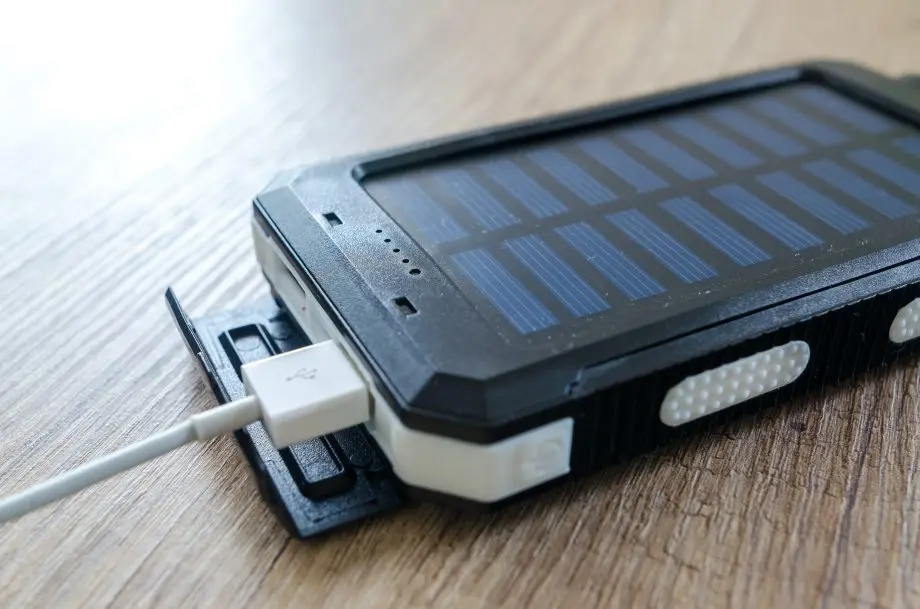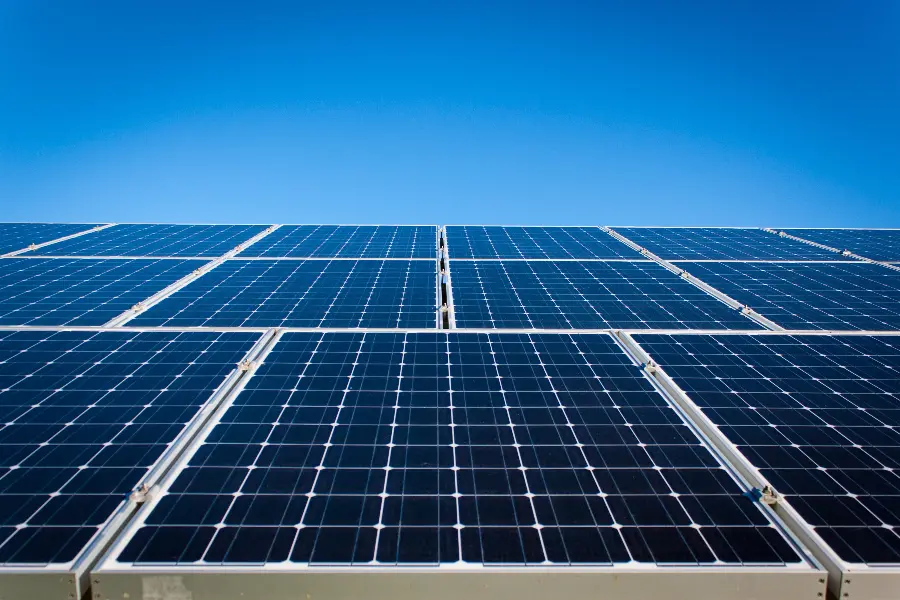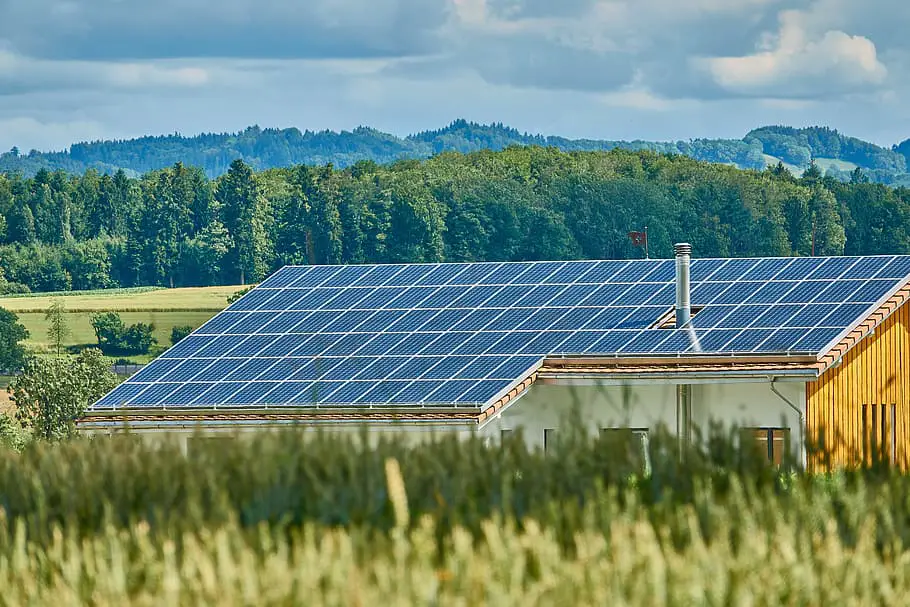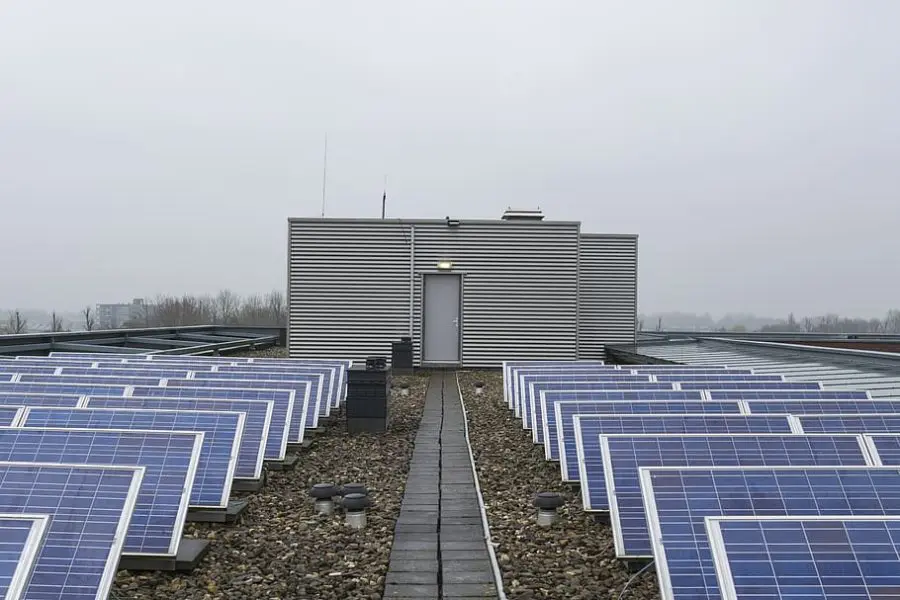
Uncover the truth about solar power with our ‘Top Solar Energy Myths Debunked’ guide. Dive in for facts that brighten your understanding of solar energy!
Ever heard that solar panel systems don’t work when it’s cloudy or that they’re just too expensive for the average homeowner?
Well, it’s time to set the record straight! In our quest for cleaner, more sustainable energy sources, we’re shining a light on the ‘Top Solar Energy Myths Debunked’.
Get ready to uncover the truth about solar energy and see why it’s a bright idea for our future.
Top Solar Energy Myths Debunked
Are you curious about solar energy but find yourself tangled in a web of hearsay and half-truths? You’re not alone.
With the rise of solar power, there’s been an influx of common misconceptions that often cloud the facts.
In this post, we’re going to clear the air and debunk the top solar energy myths.
We’ll explore everything from the efficiency of solar panels to their functionality in different climates and even their impact on your wallet.
So, let’s dive into the world of solar energy and separate the myths from the facts.
It’s time to illuminate the truth about this game-changing, renewable energy source.
Brief Overview of Solar Energy
Let’s start with the basics. Solar energy, in its simplest form, is energy from the sun.
It’s a renewable resource, meaning we won’t run out of it, unlike fossil fuels such as coal or gas.
Solar energy is harnessed in a solar array using multiple solar panels, which contain cells that convert sunlight into electricity.
This electricity can then be used to power your home, reducing your reliance on traditional energy sources, your utility company, and your carbon footprint.
It’s a clean, green way to power your life, and it’s becoming more popular and accessible every day.
Importance of Debunking Myths
Now, why is it so crucial to debunk myths about solar energy? Well, misinformation can create unnecessary barriers and prevent people from making informed decisions.
Myths about solar energy can deter individuals and communities from exploring this sustainable energy option, which can contribute to a healthier planet and help fight climate change.
By debunking these myths, we can clear up misunderstandings, provide accurate information, and help more people see the benefits of solar energy.
After all, the more we know, the better decisions we can make for our homes, our wallets, and our planet.
Myth 1: Solar Panels Don’t Work in Cold or Cloudy Climates
Let’s dive into our first myth, a common one that might have crossed your mind, especially if you live in a place where sunny days are a bit of a rarity.
The myth we’re tackling is: Solar Panels Don’t Work in Cold or Cloudy Climates. It’s a concern that makes sense on the surface, right?
After all, solar panels need sunlight to generate energy. But what happens when the sky is more gray than blue, or when the temperature drops?
Let’s uncover the truth behind this myth and see how solar panels perform when the weather decides not to cooperate.
Explanation of the Myth
The myth that Solar Panels Don’t Work in Cold or Cloudy Climates stems from a basic understanding of how solar panels work.
It’s true that solar panels need sunlight to generate electricity. So, it’s easy to assume that in cold, cloudy climates where sunny days might be less frequent, solar panels might not be the best energy solution.
This myth is particularly prevalent in regions known for their long winters or frequent rainfall.
Facts Debunking the Myth
Now, let’s shed some light on the reality. The truth is, solar panels can indeed work in cold and cloudy climates.
In fact, solar panels can sometimes work more efficiently in cooler temperatures.
Heat isn’t what’s necessary for solar panels to produce electricity, it’s light.
So, even on a cold, cloudy day, as long as there is some light, your solar panels can still generate power.
Moreover, it’s worth noting that clouds don’t completely block sunlight. They merely diffuse it.
So, even under a cloud cover, solar panels can still produce electricity, albeit at a lower rate.
And let’s not forget about snow. While a thick layer of snow can reduce the efficiency of solar panels, the reality is that snow can also act as a reflector, bouncing additional sunlight onto the panels.
Plus, most solar panels are installed at an angle, which helps snow slide off.
So, the next time someone tells you solar panels don’t work in cold or cloudy climates, you can confidently debunk this myth with the facts.
Solar energy isn’t just for the sun-drenched locales; it’s a viable option for a wide range of climates.
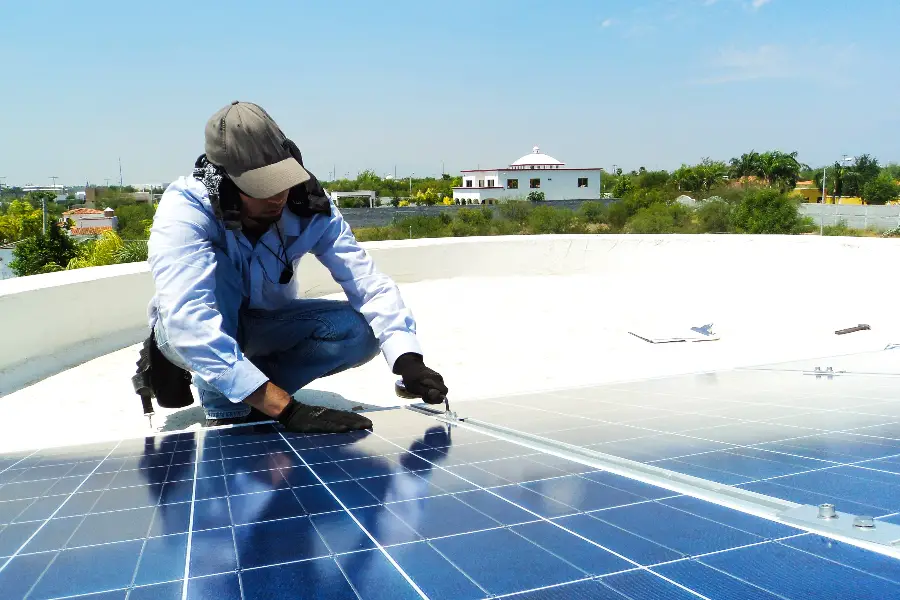
Myth 2: Solar Energy is Too Expensive
Next on our myth-busting journey is a concern that’s often at the forefront of many people’s minds when considering solar energy: cost.
The myth we’re addressing is Solar Energy is Too Expensive. It’s a common belief that the costs associated with installing and maintaining a solar energy system are prohibitively high for the average person.
But is solar energy really as expensive as it’s made out to be? Let’s delve into this myth and uncover the real costs of going solar.
Explanation of the Myth
The myth that Solar Energy is Too Expensive is a common one. It’s easy to understand why this belief persists.
The initial costs of purchasing and installing a solar energy system can seem quite high.
When people hear about the upfront costs, they often get sticker shock and immediately dismiss solar energy as an option.
This myth is further perpetuated by the idea that maintaining a solar energy system is costly and that the return on investment takes too long to realize.
Facts Debunking the Myth
Now, let’s look at the facts. While it’s true that there are initial costs associated with installing a solar energy system, it’s important to consider this as an investment rather than a traditional expense.
Why? Because solar energy can significantly reduce or even eliminate your electricity bills, leading to substantial savings over time.
In many regions, there are also various incentives, rebates, and tax credits available for solar energy systems, which can significantly reduce the overall cost.
For example, the federal solar tax credit in the United States allows you to deduct a percentage of the solar panel installation costs from your federal taxes.
As for maintenance, solar panels are actually quite durable and require minimal upkeep.
Most solar panels are designed to withstand harsh weather conditions and can last for 25 to 30 years with little to no maintenance.
Furthermore, the cost of solar panels has been steadily decreasing over the years, making them more affordable for a wider range of homeowners.
According to the Solar Energy Industries Association, the cost of installing solar has dropped by more than 70% over the last decade.
So, while the upfront costs might seem high, the long-term savings, coupled with the environmental benefits, make solar energy a worthwhile investment for many homeowners.
The myth that solar energy is too expensive simply doesn’t hold up when you consider the bigger picture.
Myth 3: Solar Panels are Not Efficient Enough
Let’s move on to our third myth, which revolves around the efficiency of solar panels.
The myth we’re tackling is Solar Panels are Not Efficient Enough. This belief suggests that solar panels, despite all their benefits, just can’t produce enough energy to meet the demands of a typical household.
But is there any truth to this claim? Let’s delve deeper into this myth and uncover the real capabilities of solar panels.
Explanation of the Myth
The myth that Solar Panels are Not Efficient Enough is rooted in the idea that solar panels, while a good concept, are not capable of producing enough electricity to power a home.
This belief often stems from a misunderstanding of what solar panel efficiency means.
When we talk about solar panel efficiency, we’re referring to how well a solar panel can convert sunlight into usable electricity.
Some people hear that solar panels have an efficiency rate of around 15-20% and assume that this means they only provide 15-20% of the electricity a home needs.
Facts Debunking the Myth
Now, let’s clear up this misunderstanding. When we say a solar panel has an efficiency rate of 15-20%, we’re not saying it only meets 15-20% of your energy needs.
Rather, this figure means that 15-20% of the sunlight that hits the solar panel is converted into electricity.
And while this might not seem like a lot, it’s actually quite impressive.
Consider this: the sun produces an enormous amount of energy. In fact, in just one hour, the Earth receives more energy from the sun than the entire world uses in a year.
So, even with an efficiency rate of 15-20%, solar panels can generate more than enough electricity to power a home.
Moreover, solar technology is constantly improving. While the efficiency rates of solar panels might not seem high compared to other forms of energy production, they have been steadily increasing over the years.
And with advancements in technology, they’re set to become even more efficient in the future.
So, the myth that solar panels are not efficient enough? It’s simply not true.
Solar panels are more than capable of providing the electricity your home needs, making them a viable and sustainable energy solution.

Myth 4: Solar Panels are Toxic
Now, let’s address a myth that might be causing some environmental enthusiasts to pause: Solar Panels are Toxic.
This myth suggests that while solar panels may be a source of clean energy, they come with a hidden cost, toxicity.
It’s a concern that raises questions about the environmental impact of solar panels. But how much truth is there to this claim?
Let’s delve into this myth and uncover the environmental footprint of solar panels.
Explanation of the Myth
The myth that Solar Panels are Toxic stems from concerns about the materials used in the production of solar panels.
Some people worry that these materials could be harmful to the environment or human health, especially at the end of the panels’ lifecycle when they need to be disposed of.
This myth is often fueled by the fact that certain types of solar panels do use small amounts of potentially harmful materials, like lead or cadmium.
Facts Debunking the Myth
Let’s set the record straight. While it’s true that some types of solar panels use potentially harmful materials, it’s important to put this in context.
These materials are encapsulated within the solar panels, meaning they’re not released into the environment during the panel’s use.
Moreover, the solar industry is well aware of these concerns and is actively working on ways to recycle solar panels and recover the valuable materials they contain.
For example, the Solar Energy Industries Association in the U.S. has launched a national recycling program to ensure that old solar panels don’t end up in landfills.
It’s also worth noting that the majority of a solar panel (up to 96%) is made up of materials that are abundant and non-toxic, like glass, aluminum, and silicon.
When compared to the environmental impact of conventional energy sources, such as coal or gas, solar panels are a much cleaner option.
They produce no emissions during operation and require no water, unlike many traditional power plants.
So, while it’s important to continue improving the sustainability of solar panels throughout their lifecycle, the claim that Solar Panels are Toxic is largely a myth.
With proper handling and recycling, solar panels can provide clean energy with minimal environmental impact.
Myth 5: Solar Energy is Unreliable
Let’s move on to another myth that often casts a shadow over the benefits of solar energy: Solar Energy is Unreliable.
This belief suggests that solar energy, while beneficial in theory, is too inconsistent to be a reliable source of power.
But how accurate is this claim? Is solar energy really as unreliable as some people believe?
Let’s delve into this myth and shed some light on the reliability of solar energy.
Explanation of the Myth
The myth that Solar Energy is Unreliable often comes from the fact that solar energy production is dependent on sunlight, which isn’t available 24/7.
People often worry about what happens when the sun isn’t shining – at night, on cloudy days, or during certain seasons.
The concern is that without a constant source of sunlight, solar energy systems won’t be able to provide a steady supply of electricity.
Facts Debunking the Myth
Now, let’s look at the facts. While it’s true that solar panels need sunlight to generate electricity, this doesn’t mean that solar energy is unreliable. Here’s why:
Firstly, even though solar panels don’t produce electricity at night, most systems are connected to the grid.
This means that when your solar panels aren’t producing electricity, you can draw power from the grid.
So, you’ll still have a steady supply of electricity, day or night.
Secondly, many solar energy systems come with battery storage.
These batteries can store excess power produced during the day for use at night or during periods of low sunlight.
This further increases the reliability of solar energy.
Lastly, it’s important to remember that the amount of sunlight a location receives is relatively predictable.
Solar energy systems can be designed based on this to ensure they meet your energy needs.
So, while the sun might not shine all the time, with the right setup, solar energy can indeed be a reliable source of power.
The myth that Solar Energy is Unreliable simply doesn’t hold up against the facts.

Myth 6: Solar Panels Cannot Work When It’s Not Sunny
Next up on our myth-busting agenda is a belief that seems quite logical on the surface: Solar Panels Cannot Work When It’s Not Sunny.
This myth suggests that without bright, sunny skies, solar panels are just expensive decorations.
But is this really the case? Can solar panels only function under a clear, sunny sky?
Let’s delve into this myth and discover the true capabilities of solar panels, regardless of the weather.
Explanation of the Myth
The myth that Solar Panels Cannot Work When It’s Not Sunny is a common one. It’s easy to see why people might think this.
After all, solar panels harness the power of the sun to generate electricity.
So, it seems logical to assume that without direct sunlight, solar panels would be rendered useless.
This belief is particularly prevalent in areas where overcast days are more common than sunny ones.
Facts Debunking the Myth
Now, let’s uncover the truth. While it’s true that solar panels generate the most electricity under direct, bright sunlight, this doesn’t mean they stop working when it’s cloudy.
Solar panels can still generate electricity on overcast days. How? Well, even when it’s cloudy, some sunlight still reaches the earth’s surface.
This diffused or indirect sunlight can still be converted into electricity by your solar panels, albeit at a lower rate compared to a bright sunny day.
Moreover, modern solar panels are designed to be efficient even in less-than-ideal conditions.
They can capture and convert different types of light, not just direct sunlight. This includes the light that filters through on cloudy or rainy days.
So, the myth that Solar Panels Cannot Work When It’s Not Sunny? It’s simply not true.
While their output may decrease in cloudy conditions, solar panels do not stop working altogether.
They’re more resilient and adaptable than they’re often given credit for.
Myth 7: Solar Energy is Too Expensive to Install and Maintain
Let’s now address a myth that often acts as a significant roadblock for those considering a switch to solar energy: Solar Energy is Too Expensive to Install and Maintain.
This belief suggests that the costs associated with not only installing a solar energy system but also maintaining it over time are simply too high for the average person.
But is this really the case? Let’s delve into this myth and uncover the true costs of installing and maintaining a solar energy system.
Explanation of the Myth
The myth that Solar Energy is Too Expensive to Install and Maintain is a common one.
When people hear about the upfront costs associated with installing a solar energy system, they often get discouraged.
Additionally, there’s a belief that maintaining a solar energy system over its lifetime can be costly and time-consuming.
This myth is often perpetuated by the idea that solar panels require frequent and expensive repairs or replacements.
Facts Debunking the Myth
Now, let’s look at the facts. While it’s true that there are initial costs associated with installing a solar energy system, it’s important to consider this as an investment.
Over time, the savings on your electricity bills can more than offset the initial solar installation costs.
Plus, there are various incentives, rebates, and tax credits available in many regions that can significantly reduce the overall cost.
As for maintenance, solar panels are actually quite durable and require minimal upkeep.
Most solar panels are designed to withstand harsh weather conditions and can last for 25 to 30 years with little to no maintenance.
Routine maintenance mainly involves keeping the panels clean and free of debris, which can often be accomplished with a simple hose down.
In the rare case that a repair is needed, many manufacturers offer warranties that cover the cost.
Plus, as solar energy becomes more common, the cost of these services is becoming increasingly competitive.
So, the myth that Solar Energy is Too Expensive to Install and Maintain doesn’t hold up when you consider the long-term savings and the minimal maintenance required.
With the right planning and consideration, solar energy can be a cost-effective and sustainable solution for many homeowners.
Myth 8: Solar Panels Will Damage Your Roof
Let’s tackle a myth that might be causing some homeowners to hesitate: Solar Panels Will Damage Your Roof.
This myth suggests that the installation process of solar panels can cause significant harm to your roof, leading to potential leaks or structural issues. But is this really the case? Let’s find out.
Explanation of the myth
The myth stems from the concern that drilling holes into the roof to install solar panels can lead to leaks or structural damage.
Some people also worry that the weight of the panels could cause problems, especially on older roofs.
Facts debunking the myth
In reality, professional solar installers are well-trained to install solar panels without causing damage.
They use specific mounting systems and techniques to secure the panels, and they also seal the areas around the mounts to prevent leaks.
In fact, solar panels can even protect the portion of the roof they cover by shielding it from weather elements.

Myth 9: Solar Energy Can’t Power Large Buildings or Industries
Next, we’re going to debunk the myth that Solar Energy Can’t Power Large Buildings or Industries.
This myth suggests that solar energy, while suitable for residential use, isn’t capable of meeting the energy demands of business owners with larger structures or industries.
But is this accurate? Let’s investigate.
Explanation of the myth
This myth is based on the belief that solar panels, while capable of powering homes, can’t generate enough energy to power larger buildings or industrial operations.
Facts debunking the myth
Contrary to this myth, solar energy is being used to power large buildings and industrial operations worldwide.
Many businesses are installing large-scale solar systems to reduce their energy costs and carbon footprints.
With enough solar panels and proper energy management, solar energy can indeed power large buildings and industries.
Myth 10: Solar Panels Require Constant Maintenance
Now, let’s address the myth that Solar Panels Require Constant Maintenance.
This myth suggests that solar panels need frequent and costly upkeep to maintain their efficiency.
But how much maintenance do solar panels really need? Let’s find out.
Explanation of the myth
The myth arises from the belief that because solar panels are exposed to the elements, they must require regular cleaning and maintenance to keep them working efficiently.
Facts debunking the myth
In reality, solar panels require very little maintenance. Rain often does a good job of washing away any dust or debris that could affect their efficiency.
Unless you live in a very dusty area or there are bird droppings, a simple annual check-up and cleaning are usually enough.
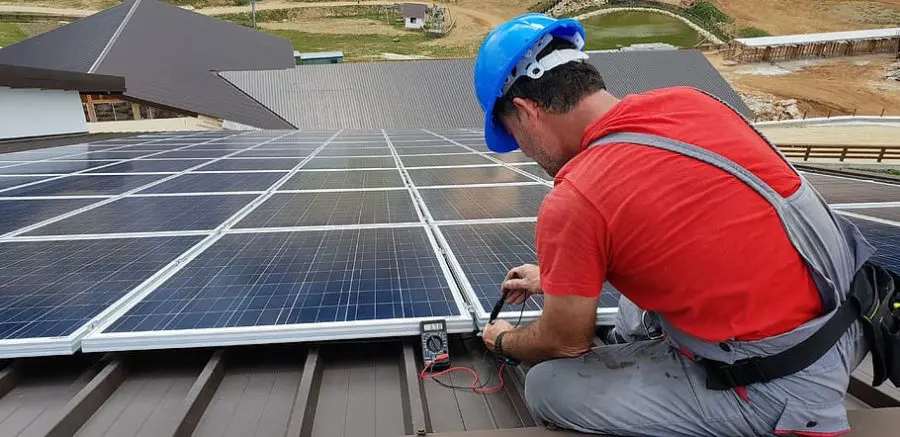
Myth 11: Solar Energy Can’t Be Stored for Night Use
Let’s debunk the myth that Solar Energy Can’t Be Stored for Night Use.
This myth suggests that solar energy, while abundant during the day, can’t be used at night. But is this true? Let’s find out.
Explanation of the myth
This myth stems from the fact that solar panels only produce electricity when the sun is shining.
Therefore, some people believe that solar energy can’t be used at night.
Facts debunking the myth
While it’s true that solar panels don’t produce electricity at night, that doesn’t mean you can’t use solar energy when the sun goes down.
Many solar energy systems are connected to the grid, allowing you to use grid electricity at night.
Additionally, the advent of solar battery storage systems allows excess energy produced during the day to be stored and used at night.
Myth 12: Solar Panels Take More Energy to Manufacture Than They Produce
Next, we’re going to debunk the myth that SolarPanels Take More Energy to Manufacture Than They Produce.
This myth suggests that the energy used in the production of solar panels outweighs the energy they can generate throughout their lifespan. But is this accurate? Let’s delve into this.
Explanation of the myth
This myth arises from the belief that the manufacturing process of solar panels, which includes mining the raw materials, manufacturing the cells, and assembling the panels, uses up more energy than the panels can produce.
Facts debunking the myth
In reality, studies have shown that the energy payback time (EPBT) – the time it takes for a solar panel to produce the amount of energy that was used to manufacture it is typically 1 to 4 years, depending on the type of panel and the location it’s installed.
Given that solar panels can last 25 to 30 years, they produce far more energy over their lifetime than is used to manufacture them.
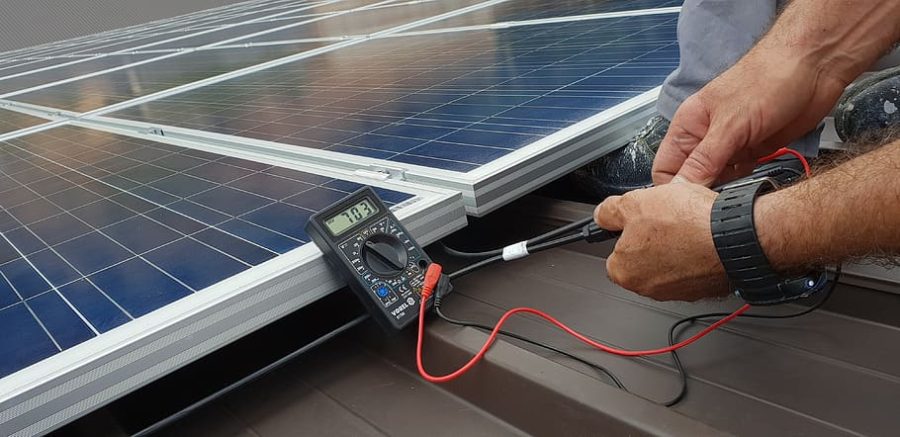
Myth 13: Solar Energy Isn’t a Viable Option in Areas with Snow
Let’s now address the myth that Solar Energy Isn’t a Viable Option in Areas with Snow.
This myth suggests that solar panels can’t function effectively in snowy or cold conditions. But is this really the case? Let’s find out.
Explanation of the myth
The myth stems from the belief that snow can cover solar panels, blocking sunlight and reducing their output.
Additionally, some people believe that solar panels can’t function efficiently in cold temperatures.
Facts debunking the myth
In reality, solar panels can still function in snowy conditions. Snow can actually help clean your panels, and once the snow slides off, the panels can produce electricity again.
As for cold temperatures, solar panels are actually more efficient in cooler conditions. The sun’s reflection off the snow can also lead to increased solar output.
Myth 14: Solar Panels Decrease the Aesthetic Appeal of a Home
Finally, let’s debunk the myth that Solar Panels Decrease the Aesthetic Appeal of a Home.
This myth suggests that solar panels, due to their size and placement, can make a home less attractive. But is this really the case? Let’s find out.
Explanation of the myth
This myth comes from personal preferences and the belief that solar panels, due to their size and the fact they are placed on the roof, can detract from the aesthetic appeal of a home.
Facts debunking the myth
While aesthetics are subjective, it’s important to note that solar panel designs have come a long way.
Many modern panels have sleek, low-profile designs that can blend in well with the roof.
Some solar panels are even designed to mimic the look of traditional roof tiles.
Moreover, the environmental and financial benefits of solar panels can also be seen as adding to a home’s appeal.
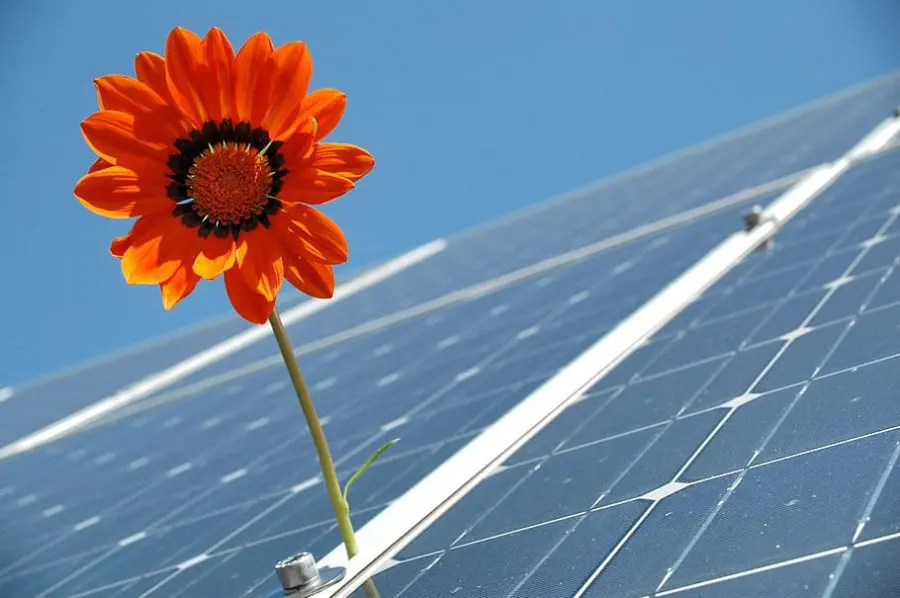
14 Top Solar Energy Myths Debunked FAQs
Now that we’ve debunked some of the most common myths about solar energy, let’s move on to some frequently asked questions.
This section, FAQs, is all about addressing those lingering questions you might have about solar energy.
From common criticisms to why some people are skeptical, we’ll cover it all.
So, let’s dive right in and continue our journey to understanding solar energy better!
What is the common criticism of solar energy?
Q. One common criticism of solar energy is its intermittent nature. Solar panels only generate electricity when the sun is shining, which means they don’t produce power during the night or on very cloudy days.
However, this issue can be mitigated with the use of battery storage systems and grid connections.
Q. What is the biggest problem with solar energy?
A. The biggest problem often associated with solar energy is the initial cost.
The upfront cost of purchasing and installing a solar system can be high, which can deter some people.
However, it’s important to remember that solar panels can significantly reduce energy bills and often pay for themselves over time.
Plus, there are various incentives and financing options available to help offset these initial costs.
Q. Why are some people against solar energy?
A. Some people are against solar energy due to misconceptions and myths, like those we’ve debunked above.
Others may be concerned about the aesthetic impact of solar panels on their homes, or they may live in areas where solar energy is less effective due to climate or lack of sunlight.
Q. Why are people skeptical of solar?
A. Skepticism about solar energy often stems from a lack of understanding or misinformation.
Some people may be skeptical about the efficiency and reliability of solar energy, or they may believe that it’s not a viable solution to our energy needs.
However, as we’ve seen, these concerns are often based on myths and misconceptions, and the reality is that solar energy is a reliable, efficient, and sustainable energy source.
Top Solar Energy Myths Debunked Final Thoughts

As we wrap up our enlightening journey into the world of solar energy, it’s time to revisit the myths we’ve debunked and the truths we’ve uncovered.
In this concluding section, we’ll recap the debunked myths and look ahead to the promising future of solar energy.
So, let’s bring it all together and see how solar energy stands as a viable, efficient, and sustainable solution for our energy needs.
Recap of the debunked myths
We’ve journeyed through a landscape of myths and misconceptions, shedding light on the truth about solar energy.
We’ve learned that solar panels can indeed work in cold, cloudy climates and that they are far more efficient than some people believe.
We’ve debunked the myth that solar energy is too expensive and discovered that solar panels are not toxic.
We’ve also found that solar energy is reliable and that solar panels can work even when it’s not sunny.
We’ve put to rest the myth that solar energy is too expensive to install and maintain, and we’ve explored additional myths, including the idea that solar panels will damage your roof, can’t power large buildings or industries, require constant maintenance, can’t be stored for night use, take more energy to manufacture than they produce, aren’t a viable option in areas with snow, and decrease the aesthetic appeal of a home.
The future of solar energy
Looking ahead, the future of solar energy is bright. As technology continues to advance, we can expect solar panels to become even more efficient and affordable.
The development of better battery storage systems will also make it easier to store solar energy for use at night or during cloudy days.
Moreover, as more people become aware of the benefits of solar energy and the truth behind the myths, we can expect to see an increase in the adoption of solar energy.
Solar energy is not just a viable solution for our energy needs; it’s a key part of a sustainable and environmentally-friendly future.
So, as we move forward, let’s carry with us the knowledge we’ve gained and continue to debunk the myths that surround this incredible source of clean, renewable energy.


